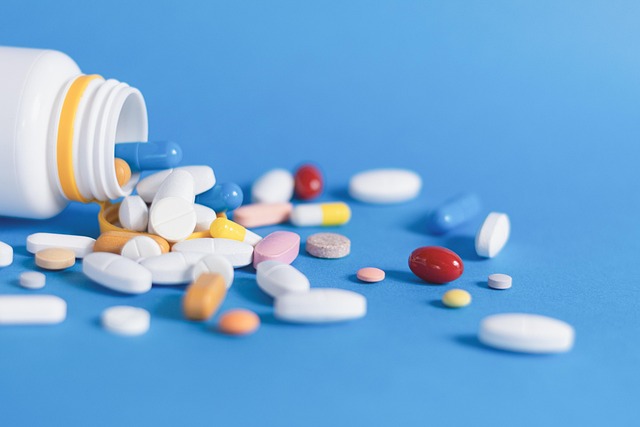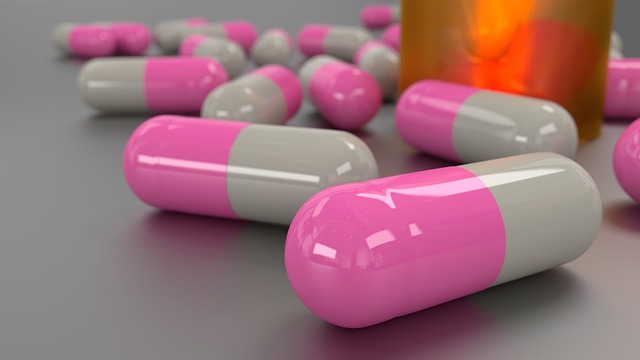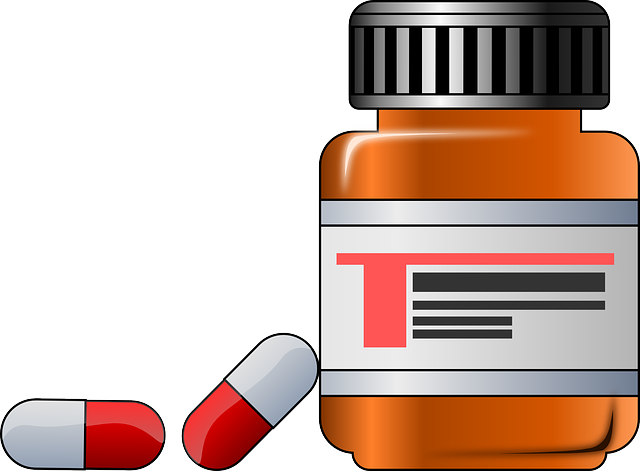GLP-1 Drugs: Versatile Diabetes & Weight Management Treatments
GLP-1 receptor agonists, mimicking natural hormone GLP-1, are game-changer medications for type 2 diabetes. They lower blood sugar by stimulating insulin and suppressing glucagon, while also curbing appetite and promoting weight loss. These drugs enhance cardiovascular health and offer various administration routes (injectable, oral) with unique advantages and considerations. Dosing depends on patient characteristics, requiring individualized strategies based on age, weight, BMI, kidney function, and comorbidities. Common side effects include gastrointestinal upset, with serious symptoms needing medical attention. GLP-1 drugs interact with other medications and have contraindications, necessitating close healthcare provider monitoring. Future research focuses on more convenient delivery methods and personalized medicine approaches.
GLP-1 receptor agonists have emerged as powerful tools in diabetes management, offering significant benefits beyond glycemic control. This comprehensive guide delves into the world of GLP-1 drugs, exploring their mechanism of action and diverse advantages. We dissect the various types available, providing a thorough overview for healthcare professionals. Dosing strategies, administration routes, and patient-tailored approaches are examined to optimize treatment. Additionally, we discuss side effects, drug interactions, and future prospects in GLP-1 therapy, ensuring practitioners are equipped with essential knowledge on these innovative medications.
Understanding GLP-1 Receptor Agonists: Mechanism and Benefits

GLP-1 receptor agonists are a class of drugs that mimic the effects of the natural hormone glucagon-like peptide-1 (GLP-1). These drugs work by binding to GLP-1 receptors in the gut and brain, stimulating insulin secretion in response to meals and suppressing glucagon release. This dual action helps lower blood sugar levels, making GLP-1 receptor agonists a key treatment option for type 2 diabetes.
The benefits of these medications extend beyond blood sugar control. They have been shown to reduce appetite and promote feelings of fullness, leading to weight loss in many patients. Additionally, GLP-1 drugs can improve cardiovascular health by reducing blood pressure and slowing the progression of diabetic kidney disease. This multi-faceted approach makes GLP-1 receptor agonists a game-changer in diabetes management, offering both metabolic and cardiovascular benefits.
Types of GLP-1 Drugs: A Comprehensive Overview

GLP-1 receptor agonists, or GLP-1 drugs, are a class of medications designed to mimic the effects of the natural hormone glucagon-like peptide-1 (GLP-1). These drugs play a significant role in managing type 2 diabetes and have revolutionized diabetes treatment. The market offers various types of GLP-1 drugs, each with unique characteristics and mechanisms of action. Exenatide, liraglutide, semaglutide, and dulaglitide are some of the prominent examples.
Exenatide, for instance, is a synthetic version of exendin-4, a hormone found in the saliva of the Gila monster lizard. It enhances insulin secretion and suppresses glucagon release, leading to improved blood sugar control. Liraglutide, on the other hand, is a long-acting GLP-1 drug that provides once-daily dosing, making it convenient for patients. Semaglutide, with its rapid onset of action and significant weight loss effects, has gained attention for its dual benefits in diabetes management and obesity treatment. Dulaglitide, another GLP-1 drug, offers a higher dose per injection while maintaining good tolerability.
Dosing Considerations for Different Formulations

When considering the dosing of GLP-1 receptor agonists, it’s crucial to recognise that different formulations may necessitate varied regimens. For instance, while subcutaneous injections typically involve once or twice daily administration, oral tablets might be dosed differently, with some requiring multiple times per day intake. This variation is due to factors like bioavailability and drug metabolism.
For GLP-1 drugs presented as injectables, dosage should be titrated gradually starting from the lowest effective amount, usually 0.3 mg or less, to minimise adverse reactions. In contrast, oral GLP-1 drugs may have higher initial doses but are generally well tolerated. Always consult prescribing information for specific drug recommendations, as dosing can depend on individual patient needs and medical history.
Administration Routes: Oral, Subcutaneous, and Intravenous

The administration of GLP-1 receptor agonists can occur through several routes, each offering distinct advantages and considerations for patient treatment. Oral administration is a convenient method, mirroring the natural release of GLP-1 in the body. However, these drugs are susceptible to enzymatic degradation in the gastrointestinal tract, limiting their bioavailability. To overcome this, some GLP-1 drugs have been formulated as tablets with specific coatings designed to delay absorption and extend action.
Subcutaneous injection is a popular alternative, providing more consistent drug levels than oral administration. This route offers improved stability and avoids first-pass metabolism, enhancing overall efficacy. Many GLP-1 agonists are administered via prefilled pens or syringes, ensuring precise dosages and user convenience. Intravenous (IV) administration, while less common, is indicated for acute situations or when rapid glycemic control is needed. IV GLP-1 drugs offer the fastest onset of action but are typically used sparingly due to their short duration of effect and potential side effects.
Individualized Dosing Based on Patient Characteristics

The effectiveness and safety of GLP-1 receptor agonists can vary greatly among individuals, underscoring the importance of an individualized dosing strategy based on patient characteristics. Several factors influence the appropriate dosage for each patient, including age, weight, body mass index (BMI), kidney function, and existing comorbidities. For instance, younger patients or those with higher BMI might require lower initial doses to minimize side effects like nausea and vomiting, whereas older individuals or those with reduced renal function may need dose adjustments for optimal GLP-1 drug efficacy while mitigating potential risks.
Healthcare providers must closely monitor patient responses at initiation and throughout the treatment period. Regular assessments allow for dynamic dosing modifications as needed, ensuring that each patient receives the most suitable regimen for their unique physiological profile. This personalized approach enhances both therapeutic adherence and clinical outcomes, ultimately improving overall management of glucose regulation in patients with type 2 diabetes or obesity.
Optimizing Treatment Outcomes: Frequency and Duration

Optimizing treatment outcomes with GLP-1 drugs involves carefully considering both frequency and duration of administration. The dosing regimen can significantly impact patient response, balancing the need for efficacy against potential side effects. Typically, GLP-1 receptor agonists are administered once or twice daily, with many treatments starting at a lower dose that is gradually increased to maximize benefits while minimizing adverse reactions.
Duration of treatment plays an equally vital role. Long-term studies have shown sustained improvements in glycemic control and weight loss when GLP-1 drugs are used consistently over several months or even years. However, regular monitoring is crucial to assess individual responses, adjust dosing as needed, and ensure continued optimization of treatment outcomes for each patient.
Common Side Effects and Management Strategies

Common side effects associated with GLP-1 receptor agonists include nausea, vomiting, diarrhea, and abdominal pain—often referred to as gastrointestinal upset. These symptoms are usually more prominent during the initial weeks of treatment but tend to lessen over time. To manage these effects, healthcare providers may recommend starting with a lower dosage, taking the medication with food, or choosing a GLP-1 drug formulated for once weekly administration to reduce frequency.
Additionally, some patients might experience hypoglycemia (low blood sugar), especially when combining GLP-1 drugs with other antidiabetic medications. Regular monitoring of blood sugar levels is crucial, and adjustments to medication or insulin dosages may be necessary. Other less common side effects include skin reactions at the injection site and, in rare cases, pancreatitis. Prompt medical attention is advised for severe or persistent symptoms.
Drug Interactions and Contraindications

GLP-1 receptor agonists, while effective in managing blood sugar levels and weight, require careful consideration regarding drug interactions and contraindications. These drugs, designed to mimic the effects of the natural hormone GLP-1, can interact with various medications, potentially altering their efficacy or safety profiles. For instance, GLP-1 drugs may enhance the action of insulin, increasing the risk of hypoglycemia when combined with other hypoglycemic agents. Therefore, healthcare providers should monitor patients closely when prescribing these medications together.
Additionally, certain contraindications exist for GLP-1 drugs, such as a history of pancreatitis or gastrointestinal conditions that may be exacerbated by these treatments. Patients with kidney disease or severe hyperlipidemia should also exercise caution, as these conditions might affect the drug’s metabolism and clearance from the body. Knowing these interactions and contraindications is crucial for both healthcare providers and patients to ensure safe and effective management of GLP-1 drugs.
Future Directions in GLP-1 Therapy

The future of GLP-1 therapy looks promising, with ongoing research and development paving the way for more effective and targeted GLP-1 drugs. One area of focus is improving delivery methods to enhance patient convenience and adherence. Inhaled and oral formulations are being explored as alternatives to daily injections, aiming to simplify treatment regimens. Additionally, scientists are delving into the potential of combinatorial therapies, where GLP-1 receptor agonists are paired with other medications to address multiple aspects of metabolic health simultaneously. This approach could lead to more comprehensive diabetes management and improved patient outcomes.
Furthermore, personalized medicine approaches may tailor GLP-1 therapy to individual needs. By understanding specific genetic variations and metabolic profiles, healthcare providers can optimize dosing and select the most suitable GLP-1 drugs for each patient. Such advancements have the potential to revolutionize diabetes care, making it more accessible, effective, and aligned with patients’ lifestyles.
